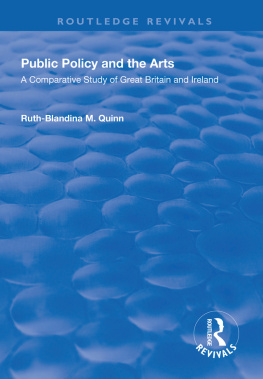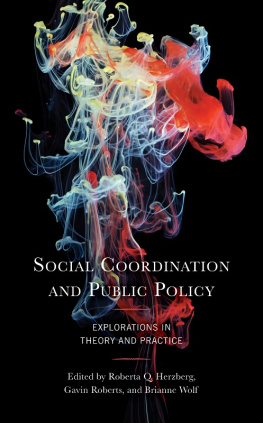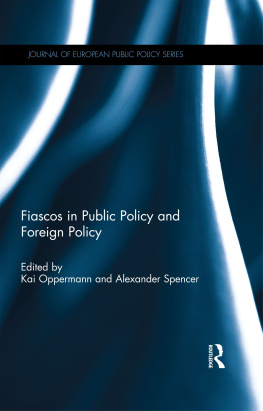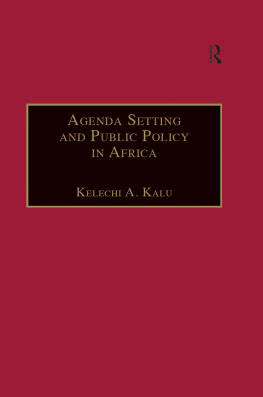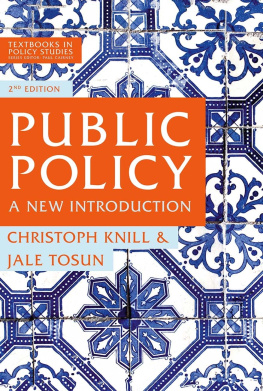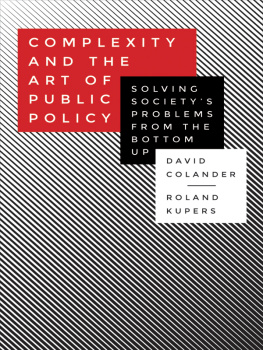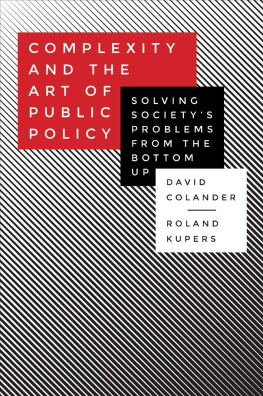First published 2000 by Ashgate Publishing
Reissued 2018 by Routledge
2 Park Square, Milton Park, Abingdon, Oxon OX14 4RN
711 Third Avenue, New York, NY 10017, USA
Routledge is an imprint of the Taylor & Francis Group, an informa business
Copyright Stuart S. Nagel 2000
All rights reserved. No part of this book may be reprinted or reproduced or utilised in any form or by any electronic, mechanical, or other means, now known or hereafter invented, including photocopying and recording, or in any information storage or retrieval system, without permission in writing from the publishers.
Notice:
Product or corporate names may be trademarks or registered trademarks, and are used only for identification and explanation without intent to infringe.
Publishers Note
The publisher has gone to great lengths to ensure the quality of this reprint but points out that some imperfections in the original copies may be apparent.
Disclaimer
The publisher has made every effort to trace copyright holders and welcomes correspondence from those they have been unable to contact.
Typeset by Manton Typesetters, Louth, Lincolnshire, UK.
A Library of Congress record exists under LC control number: 98035235
ISBN 13: 978-1-138-71950-7 (hbk)
ISBN 13: 978-1-315-19540-7 (ebk)
Introduction
Creativity and Super-optimum Solutions
Creativity
Creativity in general can be defined as an ability or an occurrence. Either way, it refers to developing an alternative way of (1) explaining gravity, (2) writing a symphony, (3) lessening the problem of poverty or (4) dealing with some other subject. The distinctive aspect of a creative alternative is that it is better on whatever criteria are considered relevant than the alternatives that were previously being considered.
Super-optimum Solutions
A special kind of creativity involves not merely finding a better way of doing things, but finding a way that exceeds the best initial expectations of whatever sides or viewpoints may have been in contention over how to deal with the problem. That kind of creativity can be referred to as super-optimizing creativity. It does more than just find a new better or best alternative: it finds an alternative that is better than what the previous perspectives had as their best expectations, simultaneously across all those previous perspectives. Super-optimizing creativity is closely related to super-optimizing analysis, which refers to methods that are useful in finding alternatives that are capable of exceeding the best expectation of all sides and viewpoints to disputes or dilemmas.
Creativity in the context of public policy evaluation tends to refer to finding alternative ways of dealing with public policy that are better than those which have previously been proposed. The relevant criteria may include effectiveness, efficiency, equity, public participation, predictability, procedural due process or other more specific criteria. Super-optimizing creativity refers to finding alternative ways of dealing with public policy problems that exceed the best expectations simultaneously of conservatives, liberals and other major viewpoints on whatever the policy problem is, using their own criteria and relative weights for those criteria.
Overview of the Book
This book contains a variety of experiences of the author around the world, including Africa (Ghana, Kenya, Malawi, Morocco, South Africa, Togo and Zambia), Asia (China, Hong Kong, India, Israel, Japan, Palestine, the Philippines, Qatar, Sri Lanka, Taiwan, Thailand and the United Arab Emirates), Latin America (Argentina, Brazil, Mexico and Panama) and Europe (Croatia, England, France, Germany, Italy, the Netherlands, Switzerland and Russia). Those experiences also include conducting workshops with numerous US government agencies, such as the Air Force, Central Intelligence Agency, Congressional Budget Office, Defense Department, Justice Department and Veterans Administration. Other sources of ideas for generating case studies of super-optimum solutions include the conducting of workshops for adult education programmes, students at the University of Illinois and conventions of such associations as the American Political Science Association (APSA), Association for Public Policy Analysis and Management (APPAM), American Bar Association (ABA), International Political Science Association (IPSA), Midwest Political Science Association (MWPSA), American Society for Public Administration (ASPA) and International Association for Schools and Institutes of Administration (IASIA). These sources deserve credit for having stimulated the ideas and examples presented in this book.
Super-optimum solutions (SOS) in public controversies involve solutions that exceed the best expectations of liberals and conservatives simultaneously, within public or government controversies. An optimum solution is one that is best on a list of alternatives in achieving a set of goals. A super-optimum solution is one that is simultaneously best on two separate sets of goals. One set is a liberal set and the second set is a conservative set. They may share many or all of the goals, but they are likely to differ in terms of the relative weights they give to the same goals.
In general terms, a super-optimum solution is a solution to a decision-making problem where the solution is considered to be objectively better than what has traditionally been considered to be the best possible solution to that type of problem. In recent times, there has been a growing literature advocating dispute resolution in which all sides come out ahead. Such solutions are associated with the concept of settlement through mediation or through win-win negotiation, as contrasted to the adversarial determination of who is right and who is wrong. Win-win negotiations, however, may merely involve each side coming out ahead of their worst expectations.
The concept of super-optimum solutions goes beyond settlement mediation and win-win negotiation by emphasizing the possibility and desirability of each side in a dispute coming out ahead of their best expectations. That kind of dispute resolution partly stems from new philosophies that relate to supply-side economics, industrial policy and other forms of expansionist thinking, rather than zero-sum or fixed pie thinking, which assumes that the total resources are constant.
There are at least seven different ways of arriving at super-optimum solutions. The first way is by expanding the resources available. An example might include well-placed subsidies and tax breaks that would increase national productivity and thus increase the gross national product and income. Doing this would enable the tax revenue to the government to increase even if the tax rate decreases. That would provide for a lowering of taxes, instead of trying to choose between the liberal and conservative ways of raising them. It would also provide for increasing both domestic and defense expenditures, instead of having to choose between the two.




